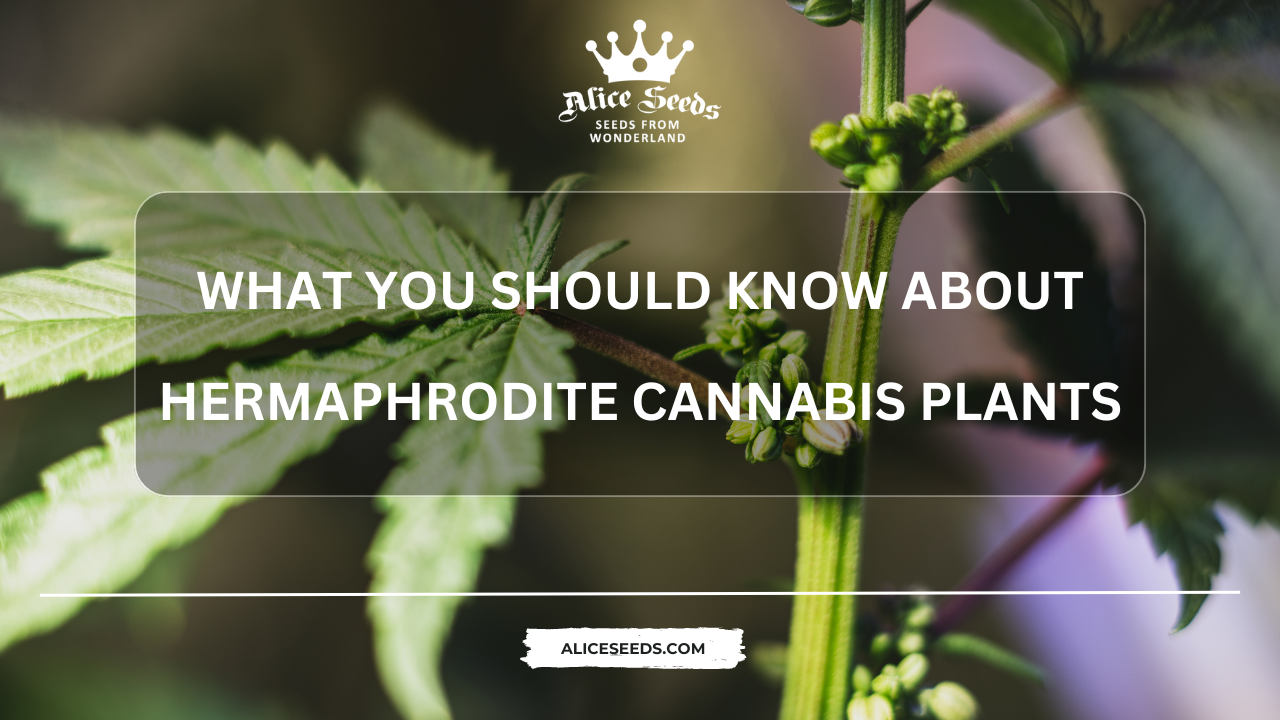Have you ever had a harvest ruined by a hermaphrodite cannabis plant after months of care? Whether you have or haven't experienced this, understanding hermaphroditism in cannabis is crucial for prevention.
What is Hermaphrodite Cannabis?

Hermaphrodite cannabis plants, commonly known as "hermies," have both male and female reproductive organs. This condition can be caused by genetics or environmental stress, such as light leaks during the dark cycle, poor nutrition, or physical damage. Hermaphrodites can produce both pollen and buds, leading to self-pollination and seeds in the buds, which can reduce the quality and potency of the harvest. A single hermaphrodite plant can devastate an entire cannabis crop. Hermaphroditism is a major concern for cultivators because it typically occurs late in the growing cycle and is difficult to detect until it's too late.
Is Hermaphroditism a "Fault" or "Feature"?
In reality, hermaphroditism is not a fault but a vital survival feature for many plant species. This adaptation is a survival strategy for many plant species when growing in adverse environments. Cannabis, like many plant species, employs hermaphroditism as a strategy to avoid extinction, enabling it to survive and reproduce in diverse and often challenging conditions.
There are thousands of cannabis strains, each adapting to its local environment, leading to varying rates of hermaphroditism. Some strains have a very high hermaphroditism rate, with over 50% becoming hermaphroditic after entering the flowering stage even without adverse environmental factors. Others have very low rates, but no strain is completely immune to becoming hermaphroditic.
Should You Worry About Hermaphroditism?
Hermaphroditism is a significant issue in cannabis cultivation. Professional breeders invest substantial time and effort to develop strains with stable genders. Gender stability is a top priority in cannabis breeding. Therefore, you should only be concerned about hermaphroditism when experimenting with pure, wild strains. When cultivating commercial strains from reputable seed banks, you can rest assured that it is almost impossible for the plant to naturally become hermaphroditic.
However, even when cultivating the most gender-stable cannabis strains, you must provide a suitable growing environment throughout the plant's life cycle. Otherwise, the likelihood of hermaphroditism increases because it is a survival strategy for the plant in harsh conditions. In fact, environmental stress is the primary cause of hermaphroditism before harvest.
What to Do If Your Cannabis Plant Becomes Hermaphroditic?
If you have more than one cannabis plant in your garden, immediately remove the hermaphroditic plant to prevent male flowers from pollinating nearby plants. Dispose of it carefully to avoid spreading pollen.
If you have only one plant, you can try removing the male flowers. If this isn't feasible, consider harvesting early before male flowers pollinate. If the plant turns hermaphroditic too early, it’s best to cut your losses and start over.
In both cases, identify and address stress factors causing hermaphroditism, such as light leaks, temperature extremes, or unstable soil pH.
For more information on environmental stress factors causing hermaphroditism, refer to the next article.
Misconceptions About Hermaphroditic Cannabis Plants
1. Feminized Seeds Are More Prone to Hermaphroditism
This used to be true when feminized seeds were first developed from naturally hermaphroditic plants, leading to genetically unstable seeds. However, modern feminized seeds are produced from genetically stable plants induced to become hermaphroditic under controlled conditions, eliminating the genetic predisposition for hermaphroditism.
2. Quality Strains Cannot Become Hermaphroditic
As mentioned earlier, hermaphroditism is not a "fault" but a "feature" of the cannabis species. High-quality seeds (most commercial strains) are less prone to hermaphroditism, but it is not impossible. Regardless of how high the quality of the strain is, if the grower does not provide a suitable environment, hermaphroditism can still occur. Therefore, it is crucial to focus on optimizing the growing conditions rather than seeking a perfect strain.
Through this article, we hope you gain a deeper understanding of hermaphroditic cannabis plants and how to handle and prevent this issue. Stay tuned for more in-depth discussions on environmental factors leading to hermaphroditism.

